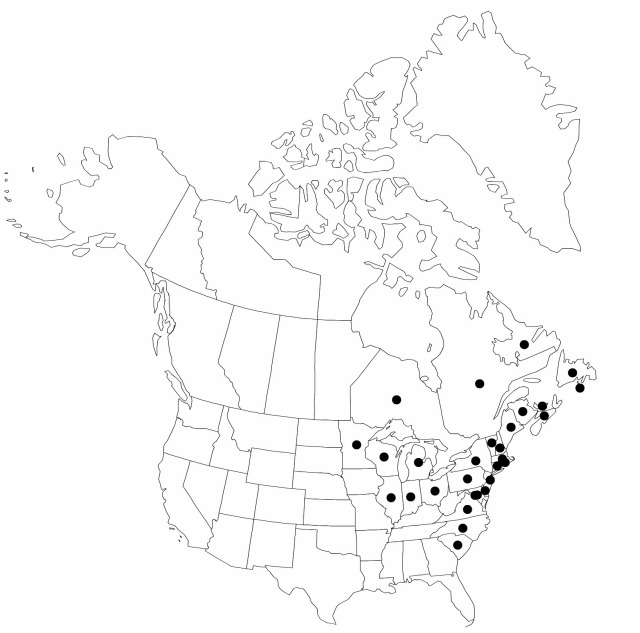Carex canescens subsp. disjuncta
Ann. Bot. Fenn. 18: 94. 1981.
Culms 30–90 cm. Inflorescences 6–12(–15) cm, all but distalmost spikes distant, proximal 2 spikes 2–5 cm apart. 2n = 54.
Phenology: Fruiting Apr–Jul.
Habitat: Wet, usually base-poor habitats, such as sphagnum bogs, moist coniferous forests and meadows, from lowlands to near the timberline in mountains
Elevation: 0–3500 m
Distribution

St. Pierre and Miquelon, N.B., Nfld. and Labr., N.S., Ont., P.E.I., Que., Conn., Del., D.C., Ill., Ind., Maine, Md., Mass., Mich., Minn., N.H., N.J., N.Y., N.C., Ohio, Pa., R.I., S.C., Vt., Va., Wis.
Discussion
Carex canescens subsp. disjuncta is a dominating subspecies in the southern part of the range of the species in eastern North America; it grades into subsp. canescens in northern areas. Subspecies disjuncta differs from subsp. canescens in its longer culms (to 90 cm), leaves, inflorescences [1–12(–15) cm], and spikes. The subglobular spikes are often more numerous and the proximal separated by 2–5 cm. The perigynia are slightly longer, clearly wider and more abruptly beaked than in the type subspecies.
Selected References
None.
